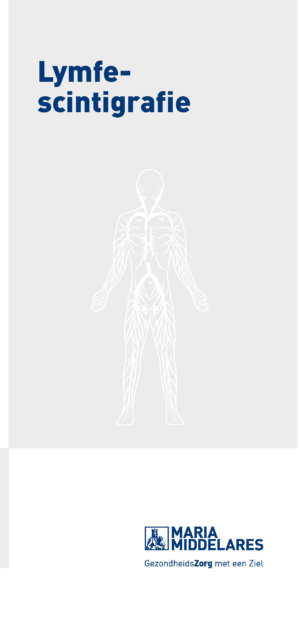Lymphoscintigraphy
What is it?
What is it?Lymphoscintigraphy shows how the flow of lymphatic fluid moves from the legs and/or arms, thus showing how the lymphatic system is working.
Test procedure
Test procedurePregnancy and breastfeeding
Are you pregnant or do you think you may be pregnant? Or are you breastfeeding? Please tell the physician before the injection. The test will not be performed if you are pregnant. If you are not sure whether you are pregnant or not, the test will be postponed until you are certain.
If you are breastfeeding, make sure to discuss this with the physician before the test. You will receive additional instructions about how to avoid unnecessary radiation exposure to your child.
Preparation for the test
You do not need to be fasting for this test. There is no special preparation needed. You can take any regular medications as usual.
The test consists of two parts. The procedure takes about three hours. A substance is injected between the large and the second toe on both feet. The physician will immediately carry out a scan, for which several images will be taken at regular intervals.
Part 1 (1 hour):
Depending on the symptoms, an injection with a mildly radioactive material is administered, either between the toes (for leg symptoms) or between the fingers (for arm symptoms). The images are taken immediately afterwards, while the patient is at rest and while he or she is moving the feet or hands slightly. For this test, the physician will check whether the radioactive material is carried to the lymph nodes.
Intermission time (1 hour):
During this hour, it is important to keep moving. Muscle movement transports lymphatic fluid. You will be told to walk for one hour (for leg symptoms) or to move your arms (for arm symptoms). You may leave the hospital during this time.
Part 2 (ten minutes):
A second set of images will be taken.
Safety and radiation
Safety and radiationThere are essentially no side effects: the injected product causes no abnormal sensations and only in very rare cases causes (very mild) allergic reactions. The injected radioactive material does constitute a dose of radiation, but it is very small (about as much as for a regular CT scan).
The quantity of radiation that you are exposed to during the test is not higher or lower depending on the number of images taken.
Results
ResultsWe prepare a report of the test. That report and the images are digitally available to the physician who requested the test.
Leaflet
LeafletOnly available in Dutch:

Lymfescintigrafie
DownloadCentres and specialist areas
Centres and specialist areas
Latest publication date: 16/05/2024
Supervising author: Dr Van Den Bossche Bieke, Dr Willaert Willem




